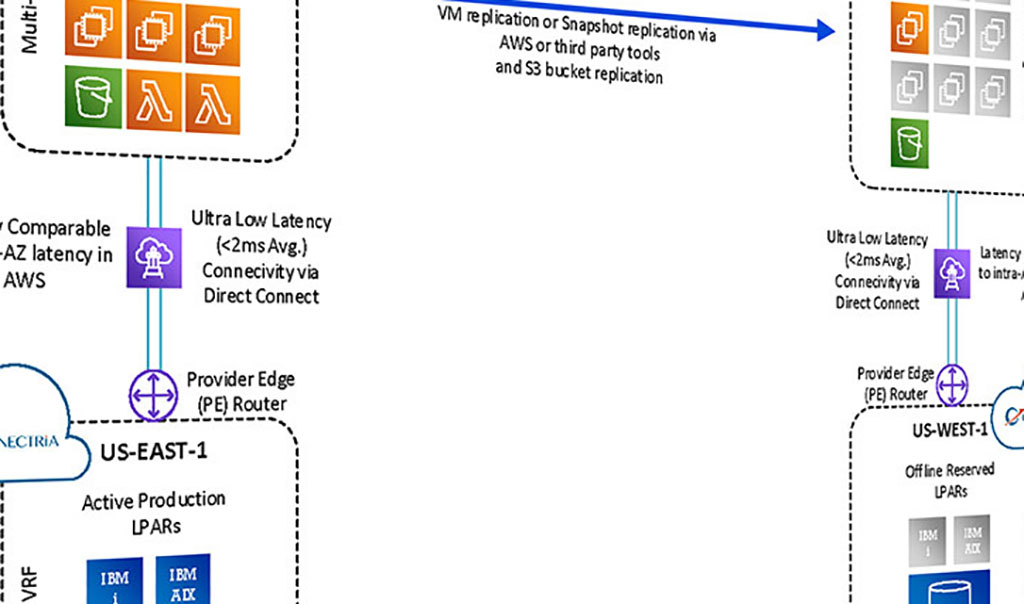Digital Transformation 2020: Preparing for the New Year in Cloud Tech
Connectria
Author
Date
January 8, 2020

Every major calendar-year event comes with its own set of concerns for IT. For example, Black Friday and Cyber Monday put stress on eCommerce sites and data centers, while major software roll-outs tend to come in the summer months. Microsoft users have even come to expect “Patch Tuesday” every month.
With 2020 around the corner, planning and post-mortems are on the schedule for most IT departments. Given the past year’s advances in cloud technology and cloud-based business models, what should professionals have to plan and look forward to in the coming year?
We found six areas that companies should pay attention to, no matter where they are in their digital transformation.
Get Ahead of the Widening Skills Gap in IT and Cloud Technology
Few companies have the institutional knowledge, in-house skills, and manpower to successfully migrate to the cloud and implement cloud solutions. We already wrote about this trend early in 2019, and frankly, the problem seems to be getting worse instead of better.
Even more disturbing, more and more enterprises are putting their total faith in the certification and training of staff at their cloud vendors—in other words, they are expecting major vendors to fill in the gaps in cloud skillsets for them. This can lead to some serious consequences, as there are limits to what vendors can do.
Take HIPAA/HITECH compliance. While a public cloud like AWS or Azure can ensure the security of that cloud, there’s much more to ensuring HIPAA compliance. For example, there are access permissions to be set, compliance accounts to set up and monitor, and breach notifications to create. Thus, companies will be in trouble if they simply assume that, by moving to a public cloud, they will automatically be in compliance with HIPAA. Further expertise in compliance is needed.
Companies don’t have to wait for a lengthy hire process, however, to get the skills they need in 2020. A number of third-party vendors can help with cloud technology, leveraging an experienced staff whose sole job is to stay up-to-date on issues like migration, compliance, governance, IT spend, and more. So look to outsource any holes you have in your IT expertise this coming year.
Find a Tool to Get Cloud Spend Under Control
Chances are that, in 2020, most organizations making extensive use of the cloud will put initiatives in place to get that spending under control:
- Flexera’s 2020 State of Tech Spend Report found 89 percent of IT professionals reporting that “Ensuring spend efficiency/eliminating waste” was their top challenge in managing IT spend.
- The report went on further to estimate that a full 30 percent of IT spend is wasted, based on expert opinion.
- A separate report, by RightScale, found that 64 percent of enterprises felt that optimizing their existing use of the cloud, especially when it came to costs, was their top priority moving forward.
As cloud services expand and pricing models become more complex, understanding and managing cloud spend will become more and more challenging, even as organizational leaders put pressure on IT departments to get spending under control.
Because most cloud platforms and software are pay-for-use, tracking usage in real-time and looking for dozens of small but significant efficiencies will be the main method for getting cloud costs under control. So, if you want to wrangle that IT budget for 2020, you’ll have to start now and look for tools that can give you greater visibility into your spend and automate efficiencies.
Prepare to Collect User Feedback
Whether your users are customers, employees, stakeholders, or a combination of the three, there’s no doubt that User Experience will be a priority for IT throughout 2020. But where many enterprise organizations break down is in collecting enough information to make intelligent decisions when it comes to improving the user experience.
It’s one thing to talk a good UI/UX game and quite another to know exactly what users want, and reconciling that with what’s possible. The companies poised to win the User Experience game are the ones with well-defined processes in place to do just that.
Plan to Work Around Data Silos
According to MuleSoft’s Top 7 digital transformation trends shaping 2020, a full 83 percent of IT decision-makers report that data silos create business challenges in their organization.
Naturally, IT departments would love to find ways to bring down the walls between those silos and get data and processes fully integrated across the organization. Realistically, though, doing so requires a massive investment, in terms of both time and money. Migrating old systems to a new centralized database, changing the company culture, and combing through years of old data just might not be in the cards.
So what can you do? A first step might be simply to find ways to get older systems to talk to each other—say, by using an API. This would not be full integration, but it is possible to make data syncing a little faster and less prone to error.
And what about getting data and applications into the cloud? A good first step might be to replicate what you currently have on-prem. This can be justified very easily as a move toward better disaster recovery. The cloud provides a good DR solution, but you can still keep your data and applications elsewhere. As long as the two are synced, you can switch over to cloud solutions at a future date.
Get Ready for Multi-Cloud and Containerization
The trend toward multi-cloud environments has been going strong for some time now. What’s happening now is that technology is changing to take advantage of multiple clouds. Containerization is one great example, where applications live inside a “container” that is platform neutral and can be shifted around with ease, even between different public and private cloud infrastructure.
As more big players are now offering containerization and other multi-cloud tools, we find that large companies are truly getting into the multi-cloud groove. It’s also shaken up the ecosystem: For example, one can use Google Anthos and deploy completely on AWS, or use Azure Arc to manage a Kubernetes cluster in CPC and a cluster of Linux servers on-prem.
It will be interesting to watch these developments play out in 2020. One thing is certain: Using multiple clouds will be easier and more cost-effective as the year wears on. But organizations will only get the benefits of multi-cloud if they plan now.
Perfect Your Analytics Game
Let’s face it: There is simply far too much valuable customer data to be collected, processed, and leveraged for a company to do it manually. And forget “trusting your gut.”
Today’s successful companies are learning how to leverage modern analytics tools for business intelligence and decision-making. The trick, of course, is knowing what data is necessary, how it should be used to fuel decisions, and when to automate (and when not to automate).
Fortunately, the cloud reduces the need to build data warehouses and employ a huge team of data scientists just to get the right analytics. Companies of any size can tap into big data, and with advanced dashboards and reporting tools, they can share these insights easily and quickly with far-flung teams. IT costs stay manageable while increasing flexibility.
If you really want to prepare for 2020, get those analytics prepared now, and get ready for those post-mortems that you know will come in January!
Topics
Keep Reading
Prepare for the future
Tell us about your current environment and we’ll show you the best path forward.
Fast track your project. Give us a call.






